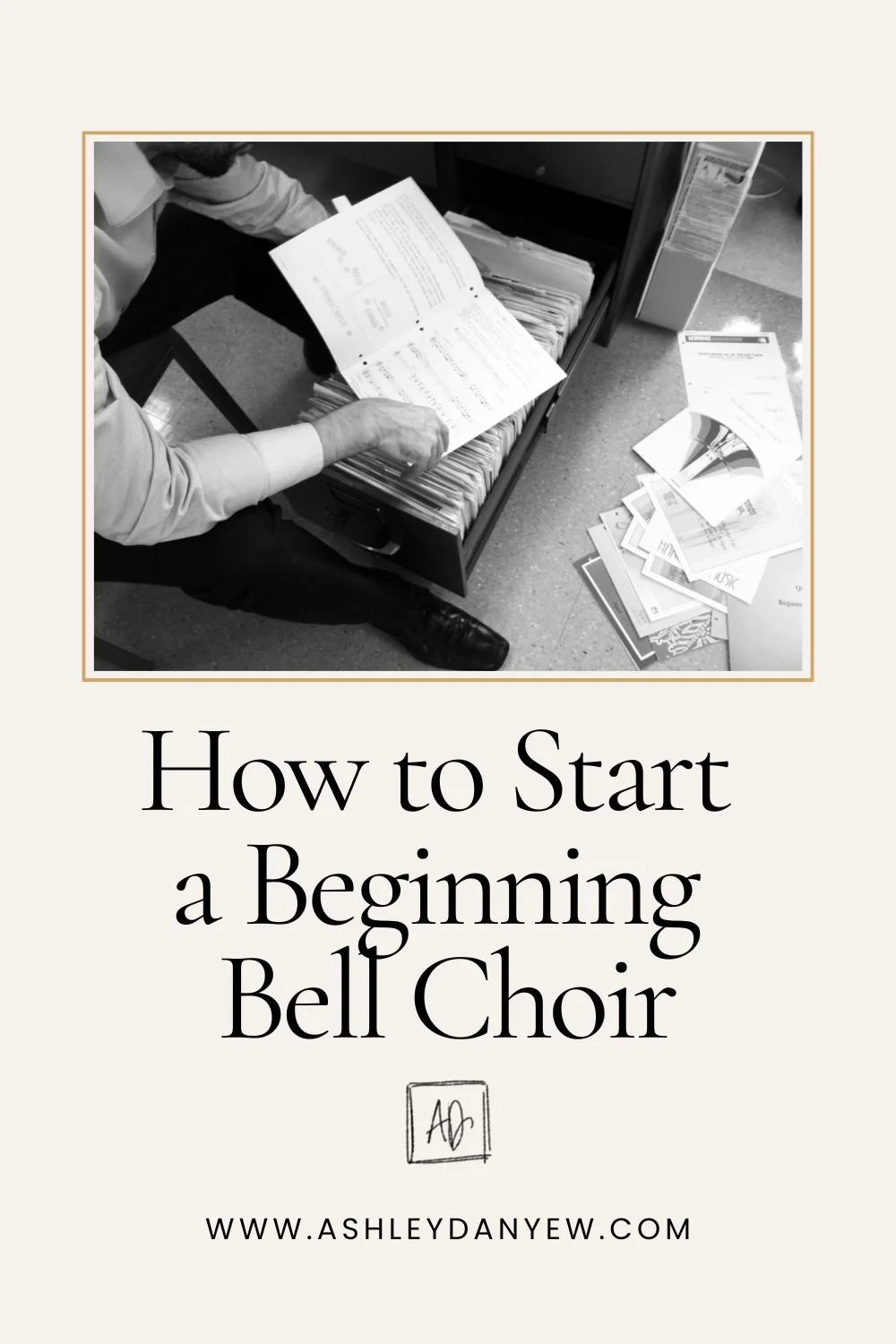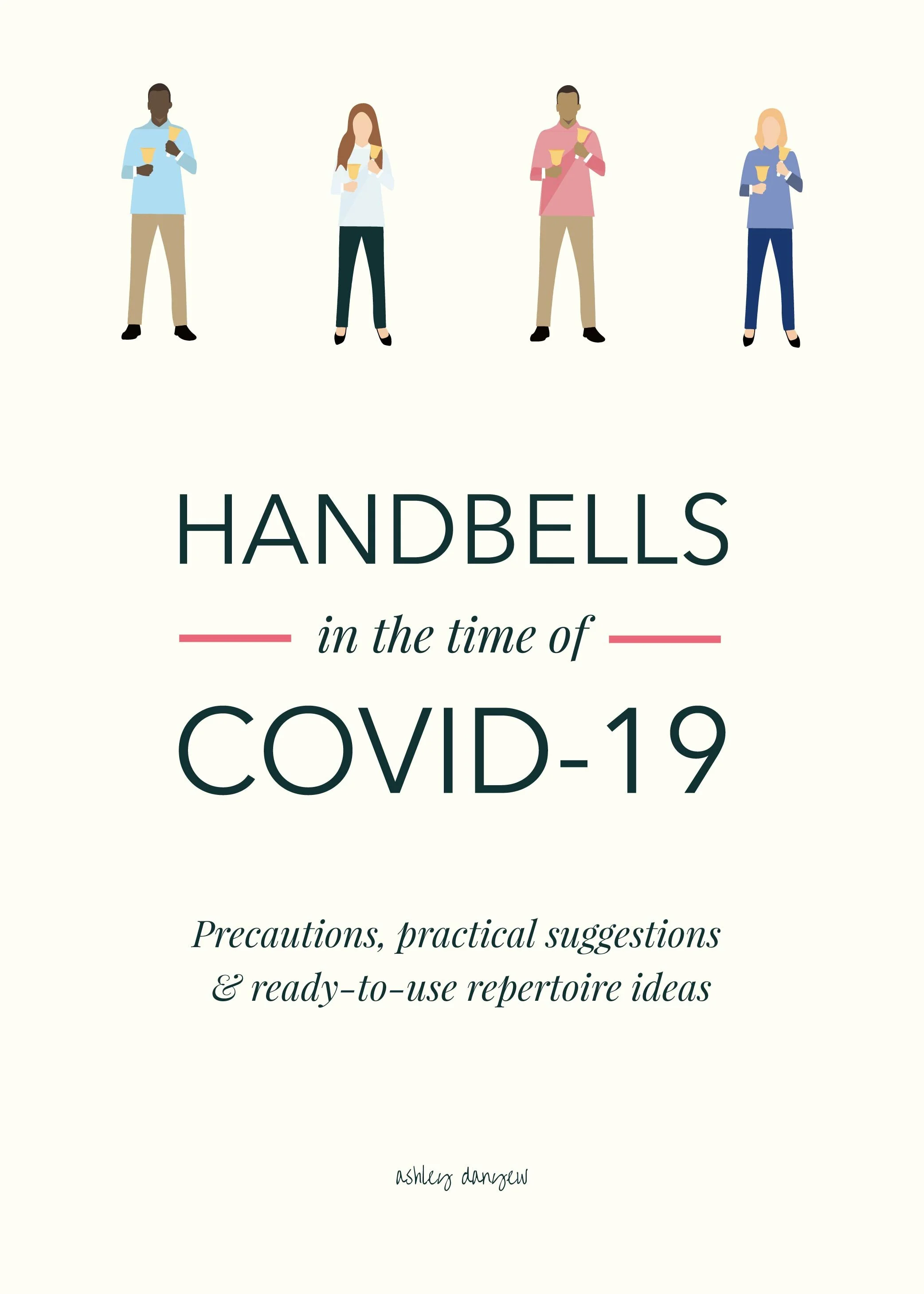*Disclosure: I get commissions for purchases made through links in this post.
We've had three rehearsals with our little bell choir now and they're doing so well! As you may recall from my last post, SD and I tried to plan a variety of music for the first few weeks — pieces that called for a flexible number of bells and covered a range of playing and reading levels.
The first night, we had several new ringers and a few that were new to reading music entirely.
(Side note: I was thrilled by this — it's so exciting to me to have new people come out to learn and make music together!).
With this scenario in the back of our minds, we also planned a few improvisation activities that wouldn't rely on music notation. This way, we could start making music right from the beginning with whoever came that first night.
Getting Started with Handbells
We distributed pencils and pairs of white gloves to everyone as they arrived and made temporary bell assignments based on the pentatonic scale. We used a C-based pentatonic scale (C-D-E-G-A) but you can easily transpose it to another key of your choice. Each person had 2 bells.
Random Ring
We introduced and demonstrated the basic techniques of ringing and damping and then let everyone try it for a minute or so, freely and in their own tempo. (This was the perfect setup for our improvisation activity because, essentially, they were already creating a "random ring" effect without even realizing it!).
Once everyone had a good feel for ringing, we started the activity formally, this time with the lowest C (C3 or C4) chiming three times to start us off. Everyone was free to ring as frequently or infrequently as they desired and since we were only using the notes of the pentatonic scale, we told them not to worry about damping for the time being.
The goal was to create a sort of "wind chime" effect that would become the backdrop for the familiar chant melody, "Of the Father's Love Begotten." The first two weeks we did this, I played the melody on the piano with plenty of space in between phrases. The third week, SD played the melody on the saxophone (the way we hope to play it in worship later this month).
Pros
The great thing about this activity is that there are no wrong notes. The pentatonic arrangement ensures that even if everyone played their bells at the same time, the resulting sonority would be a pleasant one.
There is no real sense of rhythm involved, as it is determined at the individual level, so those with lower levels of musical intuition won't feel self-conscious about not ringing in time with everyone else. Also, there is no reading involved! Those who are new readers don't have to worry about following the "third line and fourth space" while keeping track of the beat — they can just play, uninhibited.
Help those you teach learn the language of music.
This printable collection of six rhythm pattern card sets features a total of 192 different patterns made up of quarter notes, half notes, eighth notes, sixteenth notes, and quarter rests in duple and triple meters (32 cards/set).
Rhythmic Canon
Another activity we introduced the first week was a rhythmic canon. The inspiration for this came from Michael Keller's Developing Coordination Skills. Instead of reading through the examples in the book (which involves an explanation about ignoring the lines and spaces that are notated and just ringing what you have in hand), we created three shorter examples and notated just the rhythm patterns on a large whiteboard at the front of the room.
Each pattern was two measures long (4/4 time) with a repeat sign marked at the end. The patterns were numbered, "1, 2, and 3." We were still in the pentatonic arrangement but we let everyone choose whether they wanted to read the rhythm with one or two bells. Some opted to alternate R and L, others changed bells every measure, and others played everything with only one bell. The goal here was to introduce a little bit of notation and get everyone used to reading together (in rhythm) as a group.
First, we read each pattern together (with repeats). Then, we asked each person to choose one of the three patterns to play and surprise us (the goal was to hear all three patterns at the same time). Finally, we asked them to again choose a pattern from the list but this time, cycle through all three patterns (with repeats) like a canon (the goal was to have each player read all three rhythm patterns independently).
There are obviously a number of ways to do a rhythmic canon-type activity in rehearsal — I'll leave the creative variations up to you! Happy improvising!
Previously:
Starting a Bell Choir
Image credit: This work, "Improvisation Activities for Handbells," is a derivative of "handbells" by Joe Lewis, used under CC BY-SA 2.0. "Improvisation Activities for Handbells" is licensed under CC BY-SA 2.0 by Ashley Danyew.






















![Handbell Notation Guide [Infographic]](https://images.squarespace-cdn.com/content/v1/585c710603596e2c47dad93e/1491403915874-P2UH6FM8J1W1HM4UWP17/Handbell+Notation+Guide-02.png)


![The Joy of Children's Handbell Choirs [Video]](https://images.squarespace-cdn.com/content/v1/585c710603596e2c47dad93e/1482458472572-UQOTZ604Q6UKSIBZVYEZ/image-asset.png)









